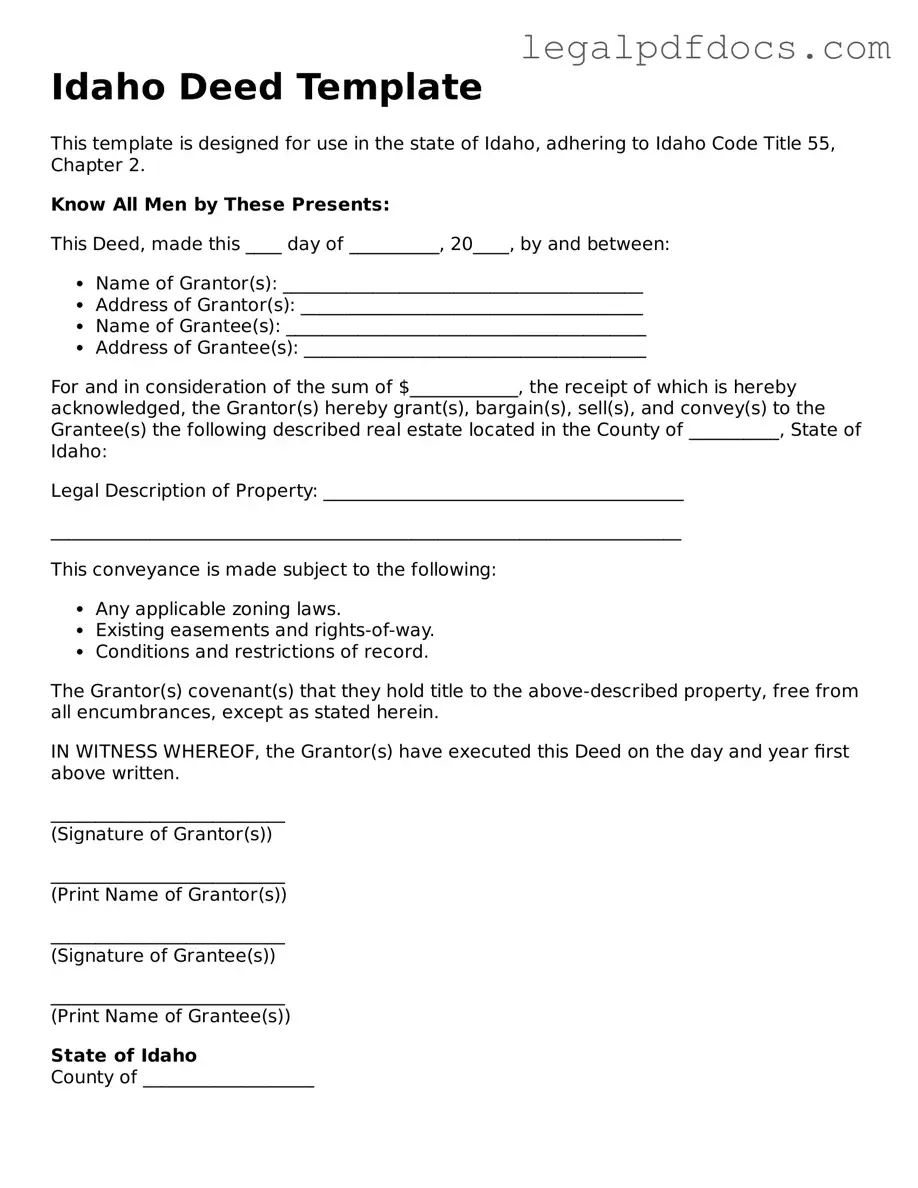The Idaho Deed form is an essential legal document that facilitates the transfer of property ownership within the state of Idaho. This form serves multiple purposes, including conveying real estate, ensuring that the rights of both the grantor and grantee are protected during the transaction. A properly executed deed includes critical information such as the names and addresses of the parties involved, a detailed description of the property being transferred, and the signature of the grantor, which must be notarized to ensure its validity. Additionally, the Idaho Deed form may vary depending on the type of transfer, whether it be a warranty deed, quitclaim deed, or special warranty deed, each offering different levels of protection and assurance to the parties involved. Understanding the nuances of each type is crucial for anyone looking to navigate property transactions in Idaho. By utilizing the appropriate deed form, individuals can help safeguard their interests and facilitate a smooth transfer process.
